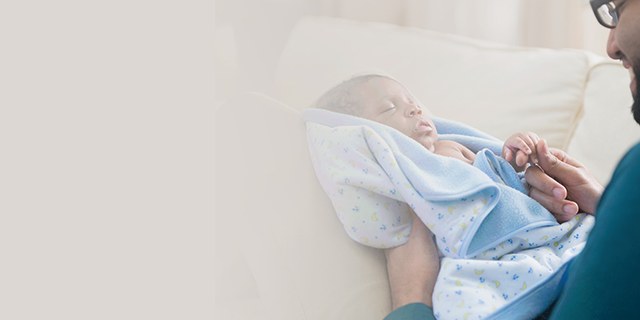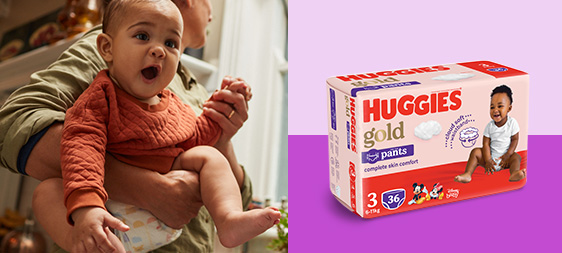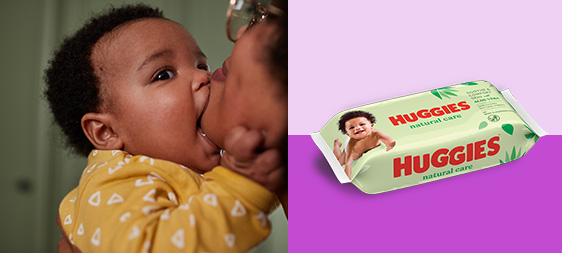Swaddling is a practice that has been used for centuries, and is one of our most commonly used methods to help calm and soothe young babies. There are many benefits to swaddling, or wrapping, and although it can be a little difficult to manage at first, it is worth trying.
Benefits of swaddling for baby
Swaddling helps to contain a baby’s startle or Moro reflex. This is a primitive reflex that is not under a baby’s control. Newborn babies can startle themselves awake, swinging their arms; swaddling prevents this from happening as much.
It keeps them warm. Body heat is retained and swaddling helps a baby to maintain a steady and even temperature.
Swaddling can prevent a baby from scratching their face and eyes.
Research has shown that swaddling helps to reduce spontaneous waking when a baby is placed to sleep on their back.
Swaddling helps to keep a baby on their back during sleep. This is a protective factor against SIDS (Sudden Infant Death Syndrome).
Swaddling can be very comforting and soothing to a young baby. They are used to feeling some resistance and pressure against their skin from being in the womb. Swaddling can mimic that sense of security that newborns were accustomed to.
Swaddled babies tend to sleep better, and for longer, than those who are not. Swaddling tends to reduce overall crying time and periods of waking.
Benefits of swaddling for parents
Swaddling makes it easier to hold a young baby. As a “bundle” they are neater, more contained, and fit comfortably into their parents’ arms.
Swaddling makes it easier to transfer a baby from one person’s arms to another. It also helps to keep a young baby’s body in alignment with their head because, as newborns, they do not have any neck control.
There can be less concern and anxiety about whether the baby could be cold or not.
Swaddling can make it easier to breastfeed as it stops little hands from coming between the mother’s breast and the mouth.
Improved sleep for baby means there are benefits for parents as well.
What is the best material for swaddling?
The best fabric to use is 100% cotton. An open weave, light-weight cotton or muslin wrap is the most practical option and not expensive. You can buy wraps ready-made or, if you’re keen, sew them yourself. The best is a square shape - then you won’t be limited to using only two of the four sides.
Don’t be tempted to use a bunny rug or blanket. “But they are so fluffy!” you may say, disappointed. A fluffy bunny blanket should not be used to swaddle your baby. They are too thick and there is too much potential for overheating. There is also an increased risk of your baby’s head and face getting covered up with the denser blanket.
Expect to use a couple of wraps a day during the newborn period. They can serve a multitude of purposes and are easy to wash. Wraps are also practical for mothers who want to cover their breast during feed times. Some babies like to cuddle a wrap when they go to sleep, though they are not recommended as a security object.
How to swaddle
There are lots of different ways to use a wrap and swaddle. Here is one option:
Lay a clean wrap on a flat surface such as a change table or bed. Make sure that as you face it, the wrap is in a square shape.
Place baby on the top of the wrap, so the back of their neck is ½ way along the top edge. Their feet should be in the middle of the wrap.
Make sure their arms are comfortably close to their sides. Don’t force their arms into a straightened position. Remember, the aim is to help your baby feel secure, not constricted.
Starting on one side bring one corner of the wrap diagonally down, over their shoulder and across their tummy. Tuck the wrap securely under their bottom. Don’t bunch the wrap up, but try to keep it smooth so it is comfortable against their body.
Do exactly the same on the other side but tuck the wrap under the opposite side.
Bring the bottom of the wrap up and over the tummy, it should come up to around the shoulders. Fold each side around to the back.
Refer to the following for more information.
Important points to consider with swaddling
Make sure you don’t cover your baby’s head or face with the wrap. Don’t let the wrap go any higher than below your baby’s neck.
Not all babies like to be swaddled. Be sensitive to your baby’s cues or signals, which tell you when they are content or uncomfortable. Communication between you and your baby is always more important than following “suggestions” on how to help manage them.
Avoid overheating by using too many wraps. If the weather is hot, dress your baby in just a singlet and nappy, or a nappy only, under a light wrap.
Avoid swaddling your baby too tightly. They still need to be able to expand their chest freely to breathe and move a little under the wrap.
If your baby seems more comfortable with their hands free, don’t feel you have to wrap them. Babies need to learn skills in self-soothing and regulating their emotions. Many like to find their fingers and comfort suck.
Make sure your baby can still move their legs around freely. Their hips need to be flexed and open, the normal position their legs will be in. Babies who are swaddled with their legs straight are at risk of having hip dysplasia.
Never swaddle your baby and place them on their tummies. This is not safe and increases the risk of SIDS.
Swaddling is only for sleep time. When your baby is awake, not going to sleep, or settling, there is no need to swaddle them.
Make sure that, when you have swaddled your baby and placed them in their cot, they are on their back with their feet at the bottom of the cot.
When to stop swaddling
There is no perfect time when swaddling needs to end. Each baby develops at an individual rate and will learn how to wriggle free eventually. Some experts advise parents to stop swaddling at 2 months, and others say to continue until closer to 6 months. There is no consensus on the perfect age.
What commonly happens is that full swaddling, including the arms, works for babies 0-3 months and from 3-6 months babies prefer to be swaddled from only the waist down. Swaddling is an effective means of stabilising a baby when they are on their back and it encourages them to stay that way. Once a baby is rolling at 3-4 months, there are still safety benefits in encouraging them to continue to sleep on their back.
It is common for babies to develop a sleep association with swaddling, and they then rely on it to go to sleep. When they kick themselves free, they often protest until they are swaddled again. If this is happening a lot, it may be time to tuck your baby in, rather than continue swaddling them. Alternately, you could invest in larger wraps, or sew larger ones.




























